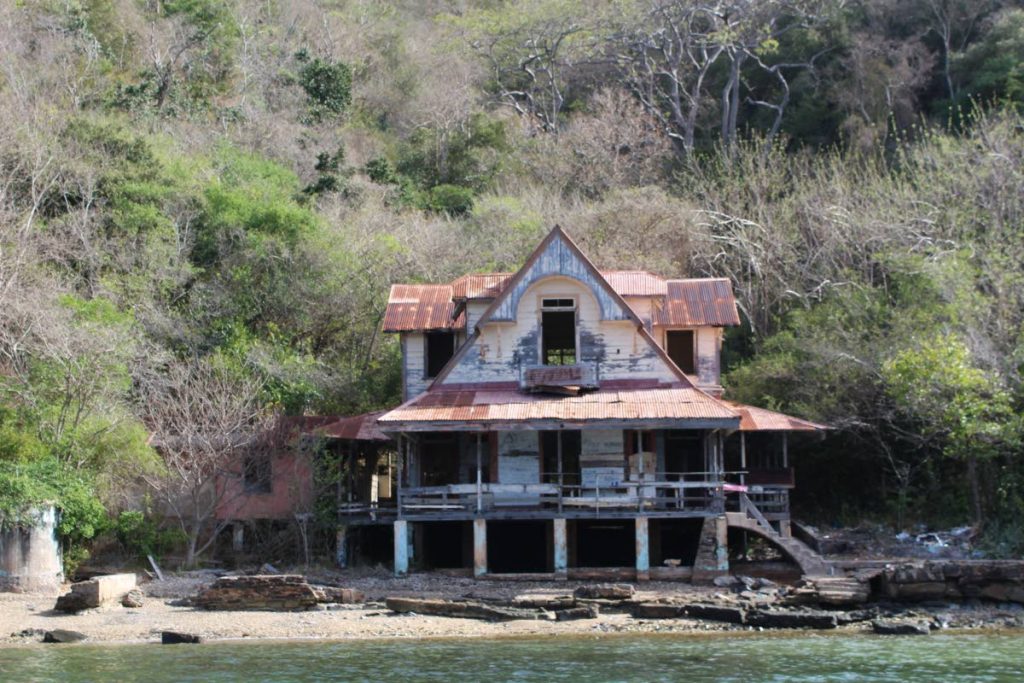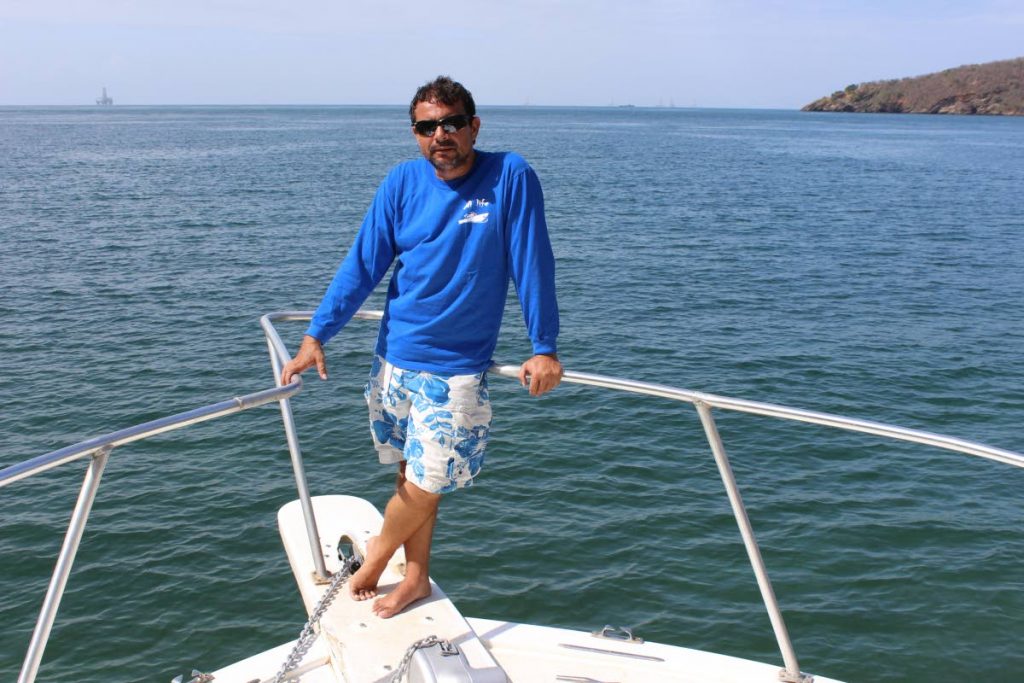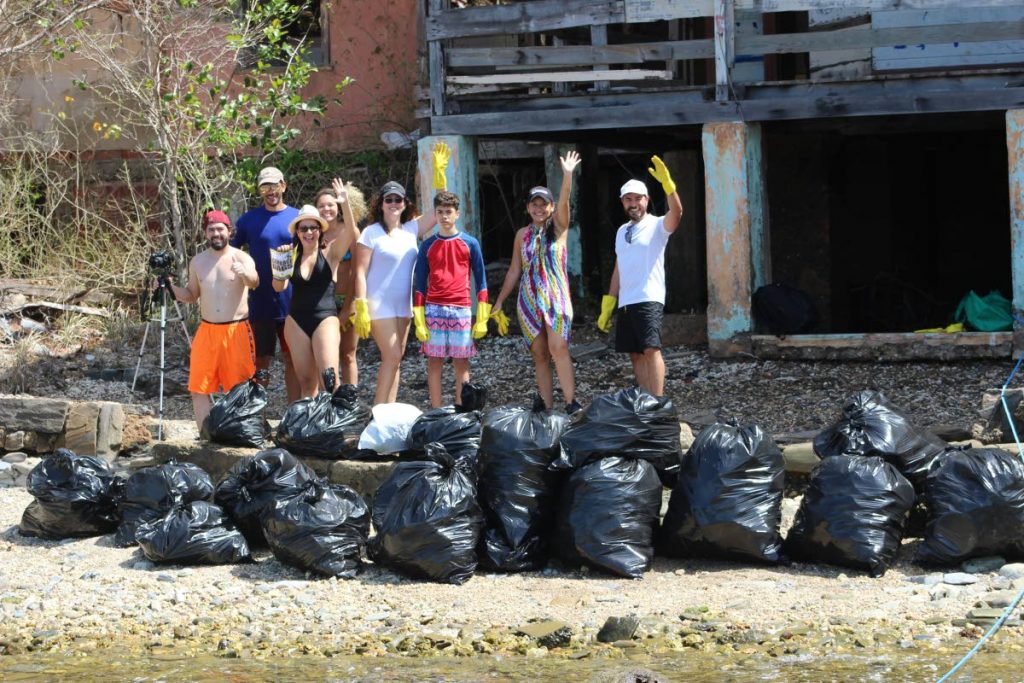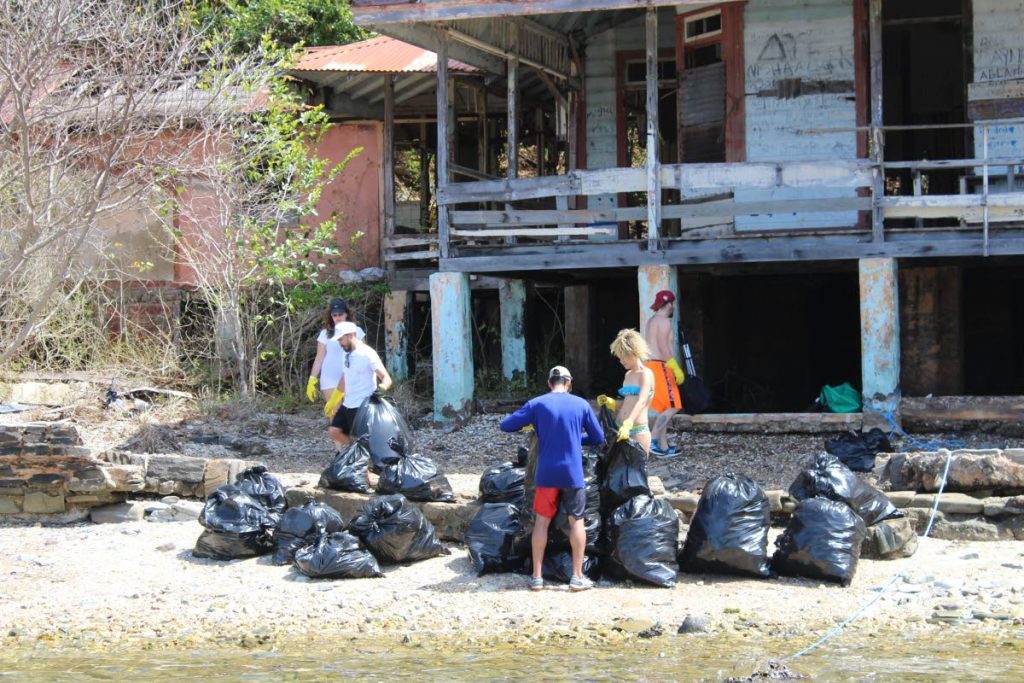Life, down the islands

SEAN ROEBUCK readily acknowledges that being a charter boat captain won’t make anyone rich in a hurry, but there’s nothing else he’d rather be doing.
Roebuck, 51, skippers the Byte Me, a 39-foot Viking yacht that he rescued from below the depths, gutted her and rebuilt her according to his customised specifications, including removing the shaft and the rudders to make it easier to go into shallower water.
“You won’t find a boat this size that can go into three feet of water where people can just step off and walk to the shoreline. And maintenance is easier,” he told Business Day while anchored just off Chacachacare, one of the islands in the Dragon’s Mouth, off the north-western tip of Trinidad.
He had just delivered a small group of Trinidadian-Venezuelan volunteers who had come to do a beach clean-up of the Doctor’s House. (Chacachacare was famously once the location of Trinidad’s leper colony.)

Roebuck has been piloting passengers down the islands (or DDI to Trinis) for over a decade, starting in 2008 part-time, more as a hobby because he just loved being on the water.
“I’ve kind of almost always owned a boat save for a small period of my life when I lived abroad. But I had a boat before I left. I was always down the islands, liming, fishing the normal drill. I spent 13 years away and during that time all I could think of was coming back here. I love my country and doing this.”
For a long time though, he had a typical corporate day job, first working in Canada and the Netherlands, then in Trinidad when in 2007, he returned home to take up a senior position at a “group of companies” (he declined to say which).
“When I came back, I had a friend who was doing this on a much smaller scale, semi-retired and I would work on the weekends with him. Then I bought a boat and started to take friends and colleagues out for fishing, so kind of a part-time thing.”
In 2014, the company he worked for started downsizing, so, after seven-and-a-half years, he took the opportunity to leave and start his charter boat service full-time as owner and operator of DDI Life charter boat tours. “I haven’t looked back since,” he says.
Roebuck looks much like you’d expect of a long-time seaman, with ruddy, weather-beaten skin and a charming smile to put his passengers at ease. But beyond that cool exterior is a man who takes his job seriously – especially safety.

“People jump into running a charter boat business thinking it’s easy money. They love boats, they love down the islands but it’s actually a business. It’s not a Sunday lime with your friends. You have to make sure people are safe, constantly looking at them in the water, even on the boat. A simple thing like spray-on sunblock can make the floor slippery. So, these things may sound trivial but when you’re on a boat (it can be serious.) I’ve had people slip and fall getting swollen ankles from these minor things so you have to keep an eye on all these things.” He also has a strict 20-person maximum capacity, which he believes is enough to be safe and comfortable on a boat the size of the Byte Me. He does admit, though, that he’s seen people with smaller vessels take on even more than that, but it’s not a risk he’s willing to take.
That doesn’t mean there’s a cap on fun. Passengers are free to roam the top and fore decks, and there are moveable bean bag chairs, storage space, a music set-up, as well as a bathroom. He even offers catering, so if necessary, all people have to do is step on and step off, their only concern being if they have the right SPF.
“It’s a very open concept type thing. So, you can have little pockets of people for intimacy but it’s still very open.”
He even offers a sail-by tour of the major islands, as well as a short history of the area.
Most of his knowledge comes from being a life-long resident, growing up and hearing the stories. But when this became a serious project, he brushed up on his local history by reading some the noteworthy tomes on the subject as well as doing as much research as he could. “I never learnt any of this history in school.”

And a native, he’s very particular on keeping the environment clean. He controls his noise levels by having his speakers face inward rather than outward so other people aren’t disturbed. He insists on passengers picking up their garbage from the beach and disposing it back on the mainland, and when he caters, he uses compostable packaging.
“Keeping the beach and water clean is also part of my safety briefing. I don’t even want to see cigarette butts thrown overboard because that’s one of the biggest solid waste pollutants in the ocean. I can’t dictate to people to bring disposable stuff – that’s going too far – but at least clean up your stuff. If you bring your bottles, take it with you. If you don’t know where to throw it away or recycle it, I will take it and throw it out for you.”
That said, he’s seen the environment getting worse. “It’s deteriorating rapidly,” he says solemnly.
The Doctor’s House compound, for example, was strewn with litter. The group who chartered Roebuck’s services that day collected about ten giant garbage bags full of trash in about two hours – and there was still more. Some of the trash included old car parts, disposable diapers, clothes, bottles, cans and plastic bags. The house itself could best be described as decrepit, a scary, dilapidated edifice not out of place in a horror film.
“People have come and stolen doors, windows, wood to build fires. This should have been a historical site, preserved with a plaque telling people about (our heritage).”
Just thinking about what could have been makes Roebuck emotional. With a defeated, regretful simmering rage, he notes how this lack of maintenance could have been a revenue stream for the country and more than beneficial to industries like his.
“There is a lack of true love and pride for our country. I take blame too. All of this should have been maintained. We could have had guided tours, plaques insides telling people the history.
"To come here should require certain permits. It’s another revenue source for Trinidad but we don’t look at it like that because we have been spoilt by oil. The population is also spoilt. We have so much opportunity in TT for tourism. We don’t have white sandy beaches but we have birds, for example. I’ve taken so many people on bird watching tours. We have this,” he says, as he gestures to the Doctor’s House.
He also acknowledges that there’s little to no regulation of the industry, although he would more than welcome some kind of sanctioned unit to ensure standards for safety and service. Many of his colleagues feel the same way, but he noted some might be concerned if their boats could meet the minimum requirements.
That said, he cautions against people who sell themselves as official or regularised. “I always say, show me the paperwork. I’ve never come across a regulated charter body. I wouldn’t mind being part of one.”
In some ways Roebuck has taken it upon himself to be a de facto leader in his charter boat community.
“(Competition) is simple and difficult at the same time. I don’t go after my competitors. Sometimes I get three or four charters a day, and I pass it on to them. So, we kind of share. I try to build a community. I even started a WhatsApp group called Dolphin Watch with the other charter boats to share information.” Among that information is, as the name suggests, sightings of the famous yet elusive dolphins so people in the area can make a quick pass by for their passengers to get a look. (The passengers on this particular trip were among the lucky ones blessed with that opportunity.)
And he agrees that part of competitiveness is cost. “It comes down to me doing the best I can. People will always look for the cheapest alternative. I keep telling them that my price is fair. It’s not the most expensive, it’s not the cheapest but you are getting best bang for the buck. Let them go to the cheapest but often they come back to me.” His average cost for a six-hour tour is $3,500 for up to 20 people.
Still, even as he takes his turns on the high seas every day (or when he can’t, he has an alternative captain and two first mates trained by him to take over when necessary), Roebuck quips, “You’ll never get rich doing this.”
It pays the bills, he says, and he reinvests his earnings into his boat because his boat is his business. So, for aspiring sea dogs, he gives this advice. “It’s a nice lifestyle. If you’re just out of school and want to achieve certain things this is not the career for you. I think you need to spend 25 years behind a desk like I did before you go this route.”
Visit DDI Life on Facebook, or visit www.ddilife.com for more information.
The Islands
Bocas Islands (Dragon's Mouth)
Chacachacare
Monos
Huevos
Gaspar Grande (Gasparee)
Gasparillo Island (Little Gasparee or Centipede Island)
Five Islands
Craig/Caledonia Islands (Craig and Caledonia are joined by a man-made causeway)
Lenagan Island
Nelson Island
Pelican Island
Rock Island
San Diego Islands (between the Bocas and Five Islands)
Cronstadt (Kronstadt)
Carrera (the prison island)


Comments
"Life, down the islands"